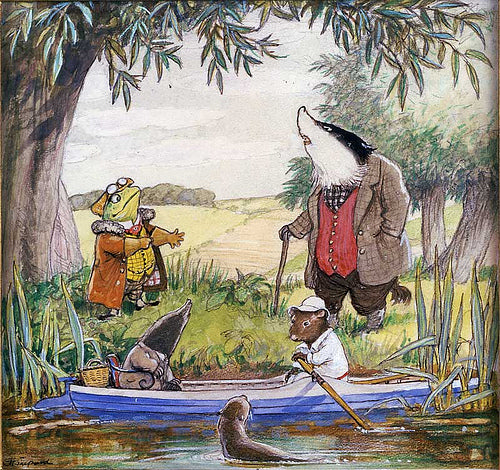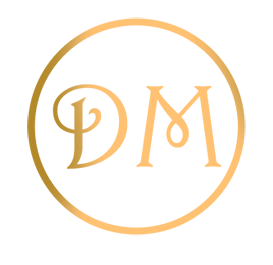...or the human within?

"The Wild Wood is pretty well populated by now; with all the usual lot, good, bad, and indifferent--I name no names. It takes all sorts to make a world."
- Kenneth Grahame, The Wind in the Willows
Looking at man's depiction of animals, whether it's in a prehistoric cave painting, an old Greek fable, or a Disney movie, we can see man's deep set habit of projecting elements of ourselves on to the creatures. Perhaps that's why images of animals are so comforting in the home or with a message.
Children's literature is absolutely full of it, and the characters staring in Kenneth Grahame's classic novel 'The Wind in The Willows' are perfect examples of this. Let us look at badgers. Well, badgers are ground dwelling nocturnal animals with a physically impressive stature - two elements Daniel captures in his Badger illustration. In Grahame's novel, the character of Mr Badger is portrayed as being a gruff society hating introvert, who all the other animals respect. What's happening here is known as 'anthropomorphism' - the attribution of human emotions, intentions, and traits to non-human entities - and in this blog we will try to understand the reason for this ancient and innate human tendency.
When we observe an animal's appearance, we very much do so through the lens of a 'human' eye. A good example of this are the creatures who trigger our nurturing tendencies and appeal to our caring nature more than others. These are the animals who are often perceived to have the physical traits of a human infant, such as possums, puppies, and penguins. There is little or no threat when looking at a possum: instead we want to wrap them up in a little blanket and care for them like our own. On the other end of the spectrum we have animals whose physical appearance spells out uncertainty or even danger to the human spectator - more often than not these are the beasts most removed from the human form, i.e., non-mammals - excluding penguins of course!
But regardless of the species of animal, (and whether or not you want to cradle the creature and sing it to sleep), I believe it's impossible for us to see and think of an animal with total objectivity. They will always be looked upon through the senses and brain of a human with an innate desire to understand the natural world. Our only means to do so is by perceiving the appearance of the beast using our own ideals of beauty, and subconsciously comparing its behavioural characteristics with man's own human nature. For although we can never be totally sure of the reason behind an animal's behaviour, it appears that many creatures exhibit the same desires, fear, cunning, and playfulness, that we find in the human (animal) species.
How many times have we cheered, jeered, laughed or cried at our animal documentaries? We see man in the beasts, and the beasts in us, intertwined: it's unavoidable.
Explore the DM Collection art prints and greeting cards.
